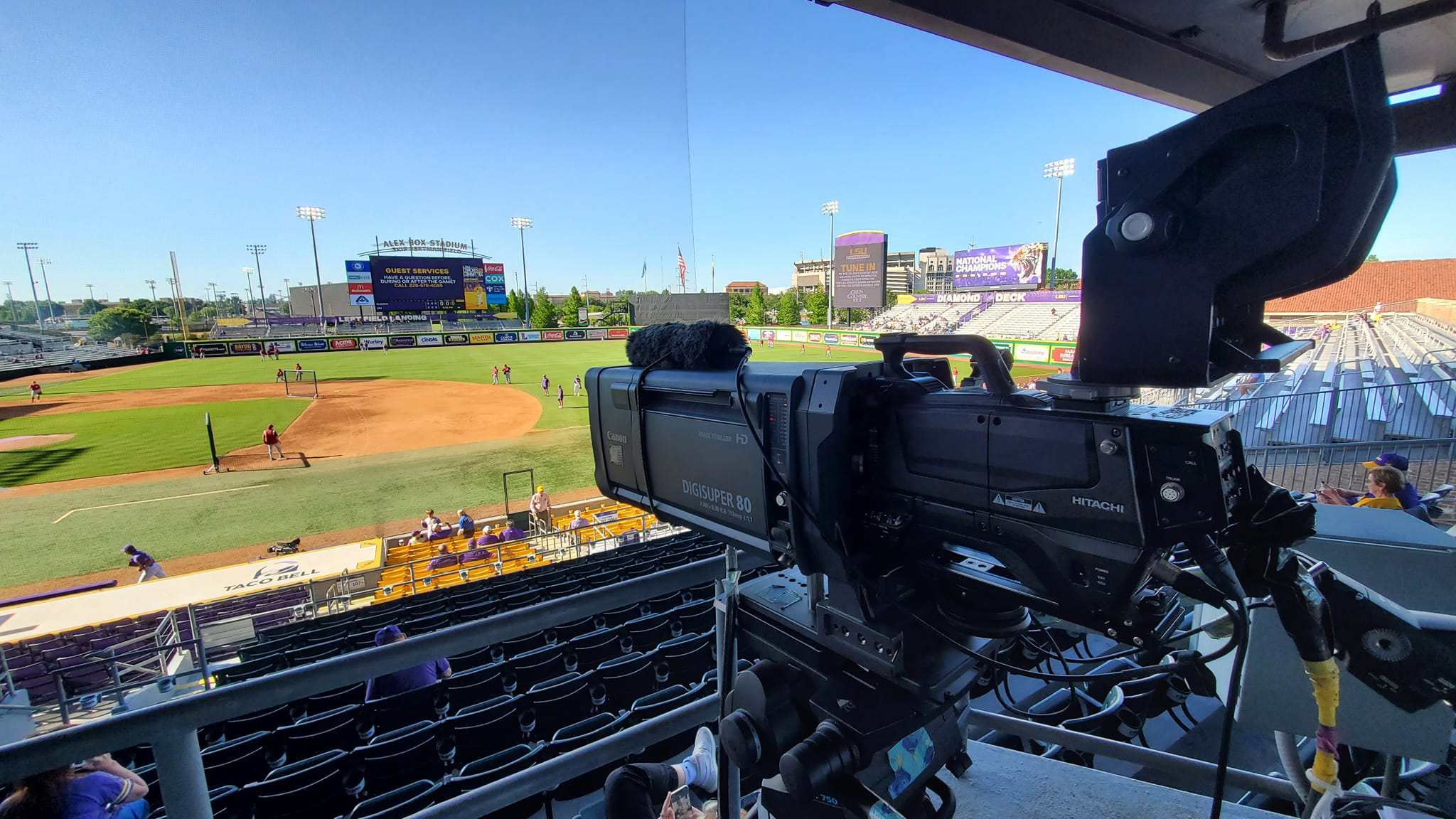
BATON ROUGE, La.—As a top public research university, Louisiana State University is also well-known for sports, especially NCAA Division I football. As a member of the NCAA’s Southeastern Conference (SEC), our LSU Tigers consistently rank high among college football teams. We have also won recent national championships in baseball (2023), women’s basketball (2023) and gymnastics (2024).
SEC schools like LSU that want their athletic events carried on ESPN’s digital SEC Network platform must contribute their own live video streams to the network. Since ESPN wants the flexibility to put the games on either their digital or linear platforms, SEC schools must utilize video facilities—such as cameras and video control rooms—that meet ESPN’s strict broadcast quality standards.
The Hitachi Kokusai Legacy
Since the launch of the ESPN SEC Network in August 2014, we’ve continually upgraded our video facilities, centrally located in the campus administration building, to produce broadcast quality live sports. We recently bought two new Hitachi Kokusai Z-HD6500 multiformat HD cameras, each packaged with a CU-HD650 camera control unit (CCU) for shading. We also plan to acquire a few more Z-HD6500 camera systems this summer as our budget allows.
Our confidence in the Hitachi brand is buoyed by our 10 years of experience with their older camera systems, including nine SK-HD1300’s and eight SK-HD1200’s that remain in use. We now have 19 Hitachi Kokusai camera systems equipped with Canon lenses. Our Hitachi cameras have given us tremendous peace of mind because they’ve just been incredibly rock-solid, despite Louisiana’s typical heat, humidity and rain.
We also built four control rooms, which are regularly in use, and often have two or more control rooms running in tandem. One produces the SEC network feed, while the others produce video for the venue’s big screen displays.
The control rooms can share the same camera sources, and they’re directly connected via fiber—using MultiDyne fiber network components—to our sports venues across this expansive campus. These include our 102,000-seat Tiger Stadium for football, Alex Box Stadium for baseball, Maravich Assembly Center for basketball, gymnastics and volleyball events, and Tiger Park for softball.
Easy to Mix
We like that we can easily mix footage shot by our different Hitachi camera models, especially for replays and highlights. Once our shaders set a certain video look, all three camera models can maintain those settings without drift. The cross-compatibility of our Hitachi cameras with CU-HD650 CCUs gives us the operational flexibility we need to rapidly reconfigure our equipment complement according to our production requirements.
All of our Hitachi cameras produce vivid imagery and the Z-HD6500s especially provide excellent light sensitivity, which is beneficial when moving between different indoor and outdoor lighting conditions. Hitachi’s Global Shutter feature, available in our Z-HD6500 and SK-HD1200 cameras, is also something we often leverage to accurately capture fast-paced sports action. Considering the speed of a baseball from the pitcher to the catcher or being hit by the bat, the global shutter produces artifact- and flicker-free imagery that holds up well, especially for slo-mos and replays.
I work with my colleague, John Schiebe, director of television operations for the SEC Network, to coordinate production schedules and juggle resources to effectively produce hundreds of LSU sports broadcasts and events annually. The reliability, flexibility and performance of our Hitachi camera configurations help our pretty lean staff save time, maximize resources and handle a bigger workload.
Lee Scioneaux is director of broadcast operations and live events at LSU Athletics. He can be reached at scioneaux@lsu.edu and John Schiebe at jschieb@lsu.edu.
For more informtion about Hitachi Kokusai products, contact Kenneth Cyr at
kenneth.cyr@hitachikokusai.us or visit www.hitachikokusai.com.







